Category
Popular
-
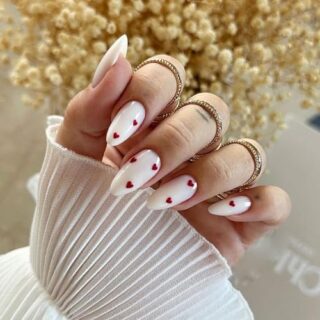 24Pcs Valentine's Day Milky White Press on Nails Medium Almond Fake Nails with Red Heart Design False Nails Valentines Day Cute Acrylic Stick Glue on Nails for Women Girlfriend Gift
$7.99
24Pcs Valentine's Day Milky White Press on Nails Medium Almond Fake Nails with Red Heart Design False Nails Valentines Day Cute Acrylic Stick Glue on Nails for Women Girlfriend Gift
$7.99
-
 24 Pcs Valentines Press on Nails Medium Almond Fake Nails Set French Full Cover False Nails Heart Press on Nails Stiletto Nail Tips Glossy Glue on Nails Acrylic Artificial Stick on Nails for Women
$7.13
24 Pcs Valentines Press on Nails Medium Almond Fake Nails Set French Full Cover False Nails Heart Press on Nails Stiletto Nail Tips Glossy Glue on Nails Acrylic Artificial Stick on Nails for Women
$7.13
-
 GlocalMe G4 Pro 4G LTE Mobile Hotspot Router, with US 8GB & Global 1.1GB Data, 5” Touch Screen LCD Display Portable WiFi Hotspot for Travel, No Contract, SIMFREE, High Speed Pocket WiFi Device (Black)
$169.99
GlocalMe G4 Pro 4G LTE Mobile Hotspot Router, with US 8GB & Global 1.1GB Data, 5” Touch Screen LCD Display Portable WiFi Hotspot for Travel, No Contract, SIMFREE, High Speed Pocket WiFi Device (Black)
$169.99
-
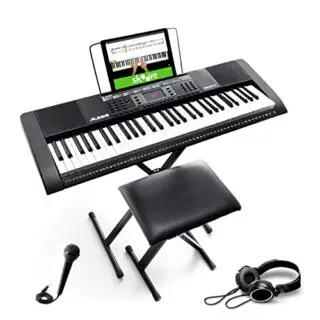 Alesis Melody 61 Key Keyboard Piano for Beginners with Speakers, Stand, Bench, Headphones, Microphone, Sheet Music Stand, 300 Sounds and Music Lessons
Alesis Melody 61 Key Keyboard Piano for Beginners with Speakers, Stand, Bench, Headphones, Microphone, Sheet Music Stand, 300 Sounds and Music Lessons
$139.99$123.19 -
 Garden of Life Organic Beet Root Gummies Made from Pectin with Antioxidants, Vitamin C, Vitamin D & B12 for Heart Health & Energy – Beets Gummies – Vegan, Gluten Free, Non GMO, Raspberry, 30 Servings
$20.15
Garden of Life Organic Beet Root Gummies Made from Pectin with Antioxidants, Vitamin C, Vitamin D & B12 for Heart Health & Energy – Beets Gummies – Vegan, Gluten Free, Non GMO, Raspberry, 30 Servings
$20.15
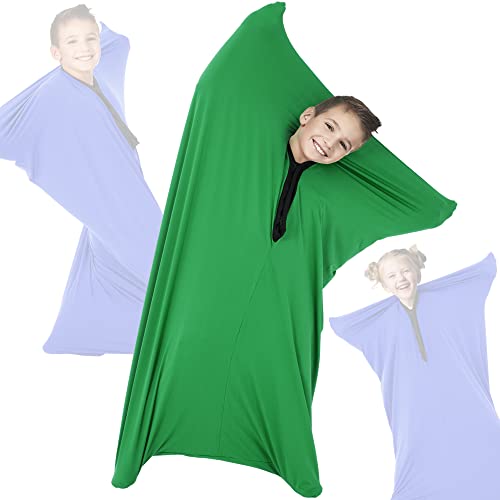
Key Takeaway:
- Sensory body socks provide a range of benefits for kids: Sensory body socks can help children improve their sensory processing skills, enhance proprioception, and promote relaxation and focus. They are particularly useful for children with sensory processing challenges or anxiety.
- Sensory body socks are a unique sensory tool: Sensory body socks provide deep pressure input and help stimulate the proprioceptive system. This type of input has been shown to have a calming and organizing effect on the nervous system, promoting better focus and body awareness.
- Selecting the right sensory body sock is important: Proper sizing and material are critical factors to consider when selecting a sensory body sock. Careful attention to sizing charts, heights, and weights will ensure a more effective sensory experience for kids.
Want to reduce stress and anxiety? Sensory socks could be the answer! This guide will tell you all about them. Learn how they can help calm your senses and where to buy them. Get informed now!
Introduction
An Overview of the Benefits of a Sensory Body Sock
Understanding the benefits of a sensory body sock is crucial for those seeking to optimize body awareness and proprioceptive input. This article provides detailed information on sensory sock benefits, including how they:
- Improve spatial awareness
- Support a sensory diet
- Promote hyperactivity management
- Aid in providing movement breaks and bedtime routines
Additionally, it covers various types of sensory socks, such as classic body socks and tube and tunnel body sock and sacks, while delving into the unique benefits of brands like Harkla Snap Closure Sensory Body Sock, Sanho Body Sox, and Fun and Function Body Sack. As certified occupational therapists also recommend sensory tools and toys to enhance feeding development, this article provides readers with essential information about the importance of incorporating sensory socks into their daily lives.
What is a Sensory Body Sock?
Sensory Body Socks are therapeutic garments designed to provide sensory input to individuals with sensory processing disorders. They are made of stretchy fabric and provide a snug, comfortable fit that soothes and calms the body. By applying pressure to the body, the socks promote a sense of security and relaxation and help individuals focus on their surroundings.
These socks come in various sizes and can be used for various sensory activities, including swinging, climbing, and jumping. They are also a popular tool for occupational therapists and can be used to improve body awareness and coordination in individuals with Autism Spectrum Disorder, ADHD, and other developmental disorders. The snug fit provided by the socks also improves balance and postural stability, helping individuals with motor planning challenges.
While sensory body socks provide a range of benefits, it’s important to note that they should be used under supervision and guidance of a qualified professional to ensure safe and effective use. It’s also important to choose the right size and material for maximum benefits.
To make the most of sensory body socks, individuals can incorporate them into their daily sensory routines. This can include activities such as crawling, playing with sensory toys, and practicing relaxation and meditation techniques. By making sensory body socks a regular part of their routine, individuals can improve their sensory processing and overall well-being.
When to Use a Sensory Body Sock with Your Child
When to Utilize Sensory Body Socks for Your Child
Sensory body socks are an excellent addition to a sensory play toolkit for a child with sensory processing difficulties or for children who love tactile and visual experiences. These socks offer a sensory ‘hug’ that calms children, provides proprioceptive feedback, improves body awareness, and soothes sensory overload.
When it comes to using sensory body socks, it’s essential to consider a child’s individual preferences, sensory needs, and sensitivities. Sensory body socks are perfect for calming and regulating children during a sensory meltdown or transition time. Additionally, they are excellent for children who need proprioceptive input to increase their body’s awareness or those who are under-responsive to touch and sensation.
It’s worth noting that while sensory body socks offer a range of benefits, they should be used under adult supervision and with care. Younger children, for instance, might require extra support to crawl or roll while inside the socks. It’s also wise to check the size of the sensory body sock and ensure that it’s appropriate for the child’s age and size.
To get started with sensory body socks, consider incorporating activities that encourage children to explore, crawl, roll, and hide while inside the sock. You can also encourage children to use the socks for rocker or balance games, or create obstacle courses that challenge their balance and coordination skills.
Getting the Right Size Body Sock for Your Child
While selecting the appropriate body sock for your child, it is crucial to consider their size to ensure optimal benefits. Here are some factors you should consider when getting the right size body sock for your child:
- Check the manufacturer’s size chart to guarantee that you choose the right size for your child.
- Make sure that the sensory sock fits snuggly but not too tightly, allowing your child to move freely while also providing compression.
- When selecting a body sock, considering your child’s height and weight is essential.
- It is essential to check the material of the sensory sock because a stretchy fabric might enable the sock to provide better compression when compared to less supple textiles.
Additionally, it is crucial to measure your child’s height and weight carefully to pick the right size that would help them obtain maximum benefits from the sensory sock. We recommend that you avoid taking guesses when it comes to your child’s size because this could negatively affect their experience with the body sock.
To ensure that your child experiences all the benefits that sensory socks offer, here are some tips that you can implement:
- Ensure that the sensory sock is comfortable enough for your child to wear for an extended period. This would encourage consistent use of the sock, which is essential to achieve the maximum benefits.
- We recommend that you start with the smallest or correct size of sensory sock to provide the desired level of compression. Sizing up may cause the sock to lose the desired level of compression, and it may not provide the same benefits as the correct size.
- Furthermore, ensure that your child’s sensory sock is clean and functional to experience its maximum benefits. Consistently checking and washing the sensory sock would help maintain its effectiveness.
The 5 Best Sensory Body Socks in 2022
Sensory body socks have numerous benefits, making them a popular choice among children and adults with sensory needs. Here are some of the best sensory body socks in 2022, each providing unique features and benefits:
- Compression Socks – Perfect for children with ADHD or Autism as they provide a gentle, calming pressure that may help to regulate their sensory system.
- Cozy Socks – These fuzzy socks provide a comforting and cocoon-like feeling, perfect for those who seek comfort from soft textures.
- Wiggle Socks – Designed to provide active stimulation of the body, these socks encourage movement and can help improve circulation.
- Weighted Socks – These socks have weights sewn into them, providing deep pressure that can help soothe and calm anxiety and stress.
- Breathable Socks – Ideal for those who experience sensory overload, these socks allow for ventilation while still providing the sensory benefits.
Many sensory socks come in different colors and patterns, making them fun and exciting for children to use in a therapeutic way. It’s essential to choose the right sensory sock based on an individual’s needs to get the most benefit.
There are numerous unique sensory socks available in the market, each designed to cater to specific sensory needs. However, it’s best to consult with a therapist to select the right type of sensory sock for each individual.
Sensory socks have a long history of use and have proven to be effective in providing a range of sensory benefits to those who use them. With advances in technology and research, there are now more options available than ever before.
Using More Sensory Activities to Calm and Focus Your Kid
Using Sensory Activities for Calming and Focusing Children
Sensory activities provide a way to help children calm down and focus. Here are some ways sensory activities can be used for this purpose:
- Involve multiple senses: When planning sensory activities, consider incorporating multiple senses such as touch, smell and sound. For example, playing with Play-Doh involves touch and smell, while listening to calming music can be used to soothe the senses.
- Use familiar activities: Children may find familiar activities such as playing with a favorite toy or spending time with a pet calming. Incorporating these into sensory activities can enhance their calming effect.
- Incorporate movement: Movement can be used to release pent-up energy which can help children focus better. Sensory activities that incorporate movement, such as jumping on a trampoline or using a therapy ball, can be helpful.
In addition to these activities, it’s important to remember that each child may have unique sensory needs. Therefore, it’s a good idea to consult with a sensory therapist or occupational therapist for personalized recommendations.
According to a study published by the American Occupational Therapy Association, sensory-based interventions have been found to significantly improve behavioral outcomes in children with sensory processing disorders.
More on Sensory Tools and Toys
The Fascinating World of Sensory Tools and Toys
The fascinating world of sensory tools and toys has been increasing in popularity due to their ability to enhance sensory experiences. Here are five essential points to consider when selecting the perfect sensory tool or toy:
- Choose tools and toys that fit the individual’s sensory needs
- Ensure safety and durability of the product
- Consider the portability for accessibility in different environments
- Research and seek professional guidance to assist in selecting the best tool or toy
- Regularly assess the effectiveness of the tool or toy in meeting sensory needs
It is vital to note that no two individuals have the same sensory needs, and some may respond differently to specific tools or toys. Therefore, one should consider unique details such as texture preference, color, sizes, and shapes that offer maximum sensory stimulation.
Here are some suggestions to consider when selecting sensory tools or toys:
- The Wheelchair Swing is ideal for individuals who require additional sensory input and upper body strength development
- Vibes Ear Plugs are suitable for noise sensitivity and provide a calming effect
- The Bumpy Gel Cushion offers hand and muscle exercises and helps with proprioceptive input
- The textured Tangle Toy helps reduce anxiety and provides a calming effect
- The weighted compression vest provides deep pressure input and helps with body awareness and coordination
It is crucial to understand the benefits of each tool or toy to select the most appropriate one. When choosing sensory tools or toys, one must also consult with professionals to ensure that the selection meets the individual’s requirements.
Conclusion
Sensory Sock Benefits Unlocked
The sensory sock is a valuable tool for anyone seeking to enhance their sensory experience. This guide highlights the benefits of using a sensory sock and the positive impact it can have on one’s mental and physical wellbeing.
Using a sensory sock can provide a calming effect and reduce anxiety levels for both children and adults. As the user slides into the sock, they experience a sense of deep pressure, which helps regulate their sensory system. This calming experience can help improve focus, reduce sensory seeking behaviors, and aid in restful sleep.
In addition to its calming effect, the sensory sock can be an ally to those with sensory processing disorders. The all-encompassing pressure of the sensory sock can help desensitize the user to certain sensations, making it easier to experience sensory input in a controlled manner.
Beyond its therapeutic benefits, the sensory sock has a fascinating history. Created by Hannelore Roth, a German therapist, the sensory sock was first developed for use in therapeutic settings for children with autism spectrum disorders. Since then, its use has expanded to include people of all ages and abilities.
Overall, the sensory sock is a versatile tool that can provide a multitude of benefits. Its ability to provide deep pressure and regulate the sensory system can help promote relaxation, calmness, and focus. Its use extends beyond therapy and can be incorporated into daily routines for those seeking a sensory experience.
Some Facts About Sensory Sock Benefits:
- ✅ Sensory socks provide pressure and proprioceptive feedback to children with sensory processing disorders. (Source: Sensory Smart Parent)
- ✅ Sensory socks can be used to help children with ADHD, sleep difficulties, and anxiety. (Source: The Inspired Treehouse)
- ✅ Sensory socks can improve a child’s body awareness and help with balance and coordination. (Source: Mama OT)
- ✅ Sensory socks come in a variety of colors and textures to provide different types of sensory input. (Source: Fun and Function)
- ✅ Sensory socks are easy to clean and can be used at home, at school, or on-the-go. (Source: Pathways)
FAQs about Sensory Sock Benefits!
What are sensory socks and how do they benefit individuals?
Sensory socks are designed to provide sensory input to individuals by applying pressure to the body. They can be beneficial for individuals with sensory processing disorders, Autism, ADHD, and other conditions. They can help individuals calm down, feel more grounded, and improve their overall proprioception.
What are the different types of sensory socks available?
There are a variety of sensory socks available to suit different needs. Some examples include compression socks, weighted socks, seamless socks, and textured socks. Compression socks provide pressure stimulation, while weighted socks offer deep-touch pressure. Seamless socks are designed for individuals with tactile sensitivity, and textured socks can provide additional tactile input.
How do sensory socks benefit children with Autism?
Sensory socks can be particularly beneficial for children with Autism. They can provide a sense of security and comfort, as well as improve body awareness and coordination. Sensory socks can also help children regulate their emotions and stress levels, and provide a calming effect.
Are sensory socks suitable for individuals with sensory challenges?
Yes, sensory socks are designed to be suitable for individuals with a range of sensory challenges. They can provide sensory input in a safe and non-invasive way, and can be used as a tool to help individuals regulate their emotions and improve concentration. However, it is recommended to seek advice from a medical professional before using sensory socks.
How can sensory socks be used in therapy?
Sensory socks can be used as a tool in therapy to help individuals with sensory processing disorders, Autism, ADHD, and other conditions. They can be used as a calming tool, or to provide additional sensory input to help individuals regulate their responses to different stimuli.
Where can I find sensory socks?
Sensory socks are available online through retailers specializing in sensory products. They can also be found at specialty stores that cater to individuals with sensory processing disorders. It is important to ensure that you purchase sensory socks that are of high quality and meet safety standards.
Written by Admin
100% Safe
Secure Shopping
Online Support
Email Us 24/7
Trending Offers
Grab Them Now
Popular Brands
Some Of The Best
Hand Picked
Chosen By Us
Latest Posts
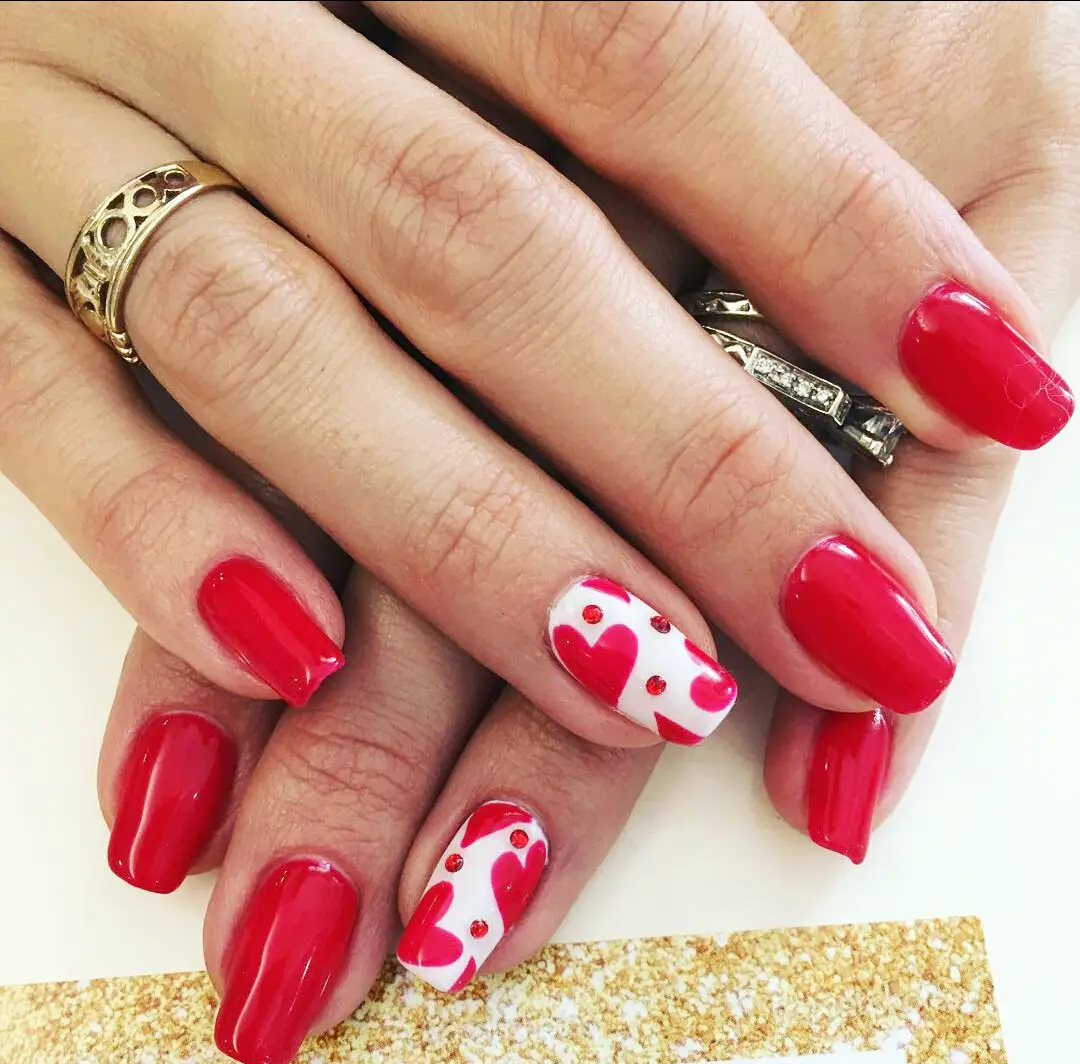

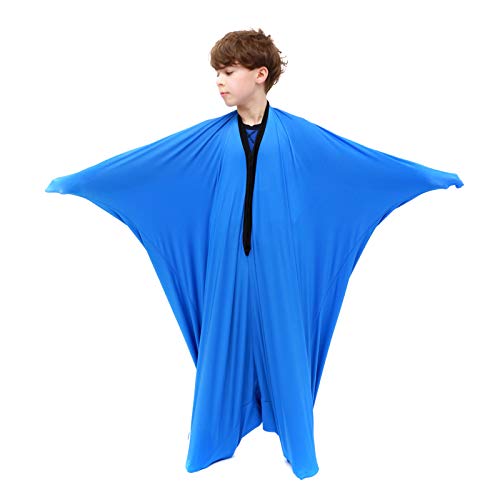
Store Updates






